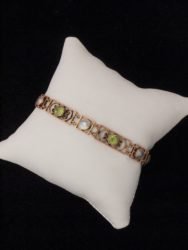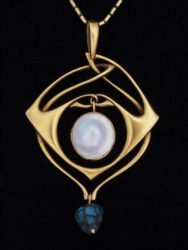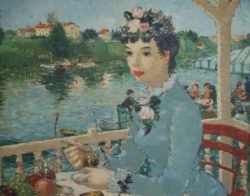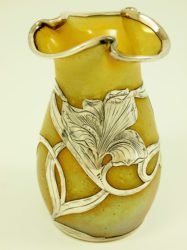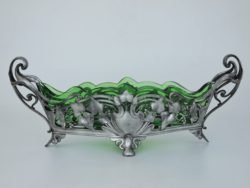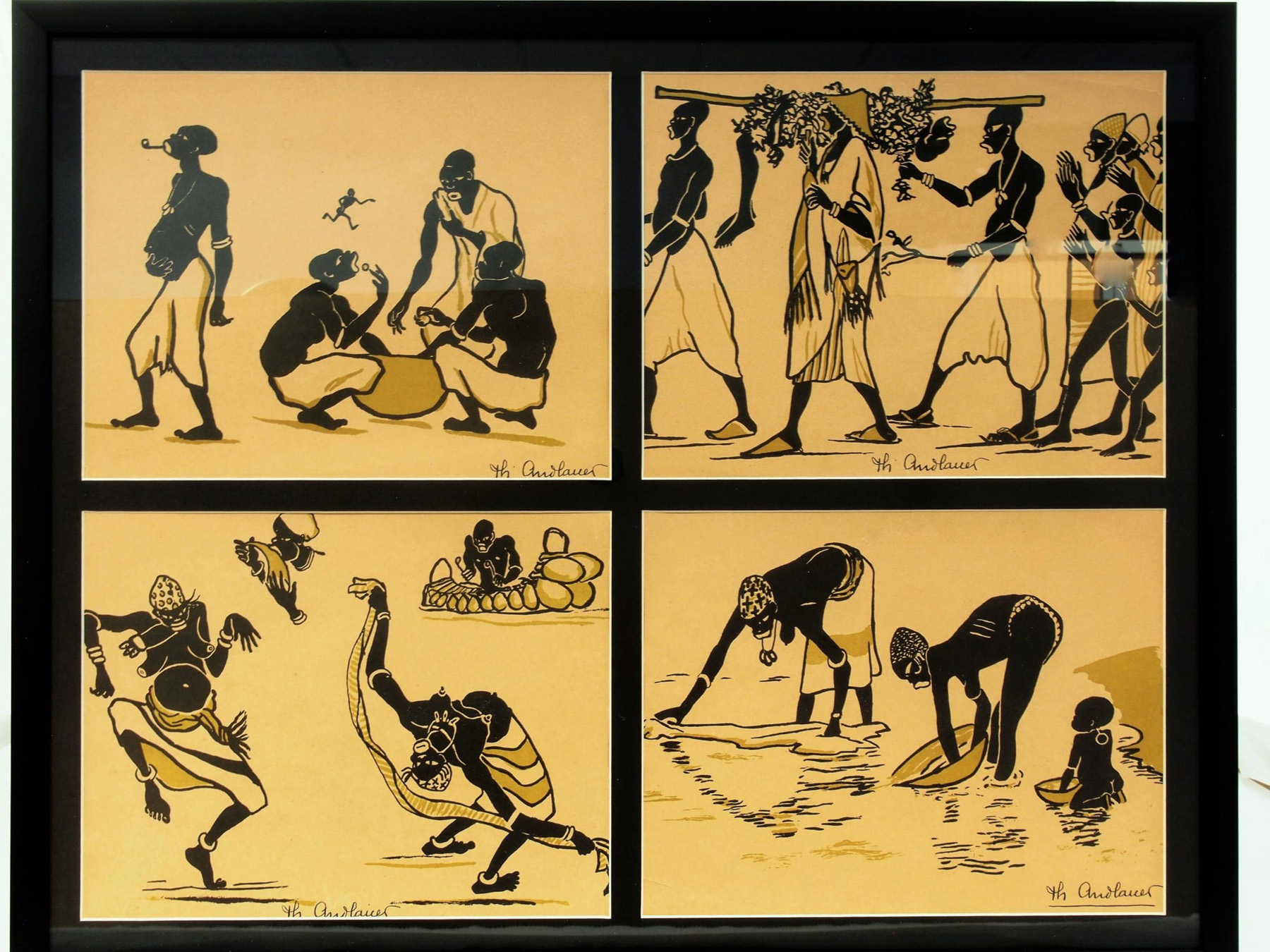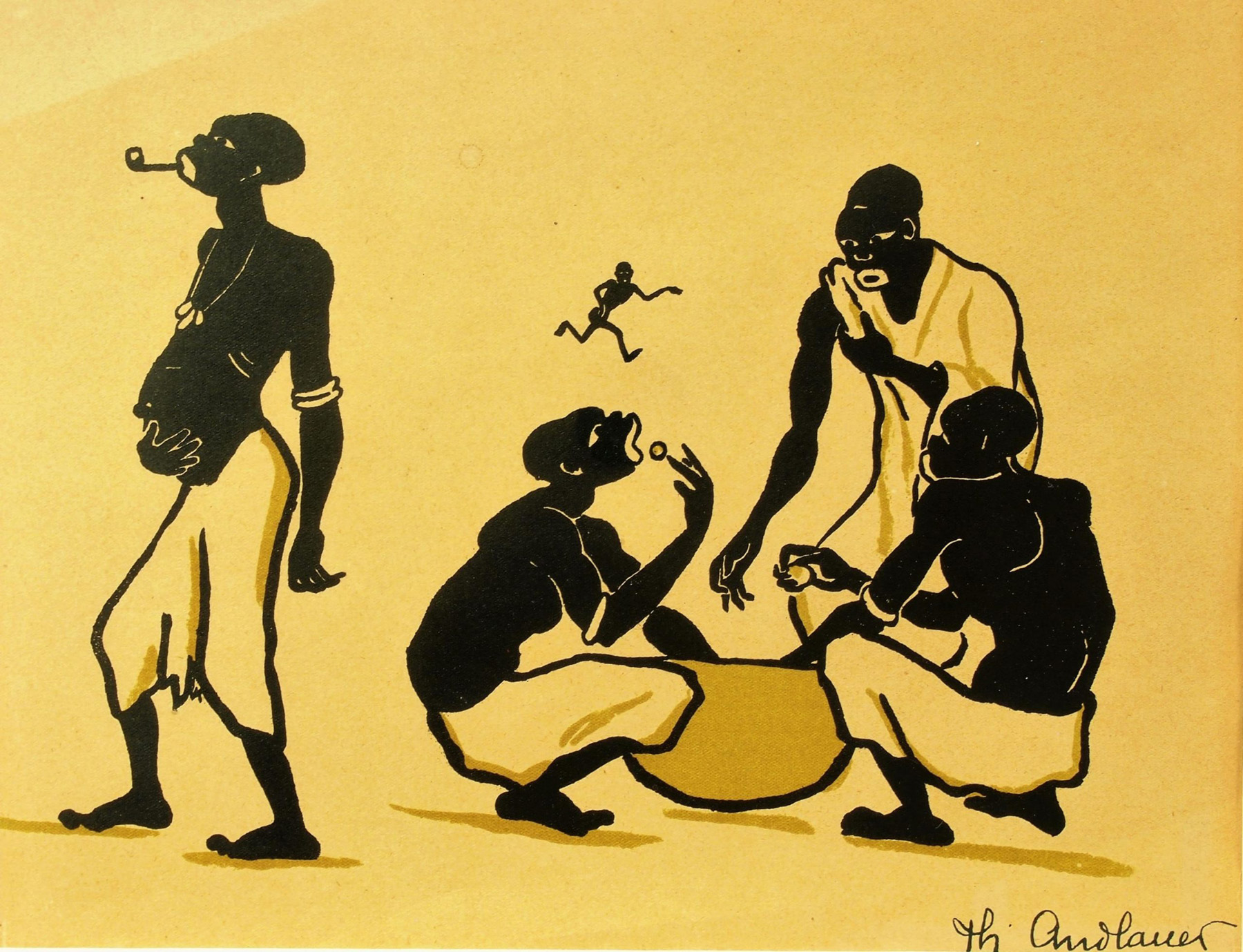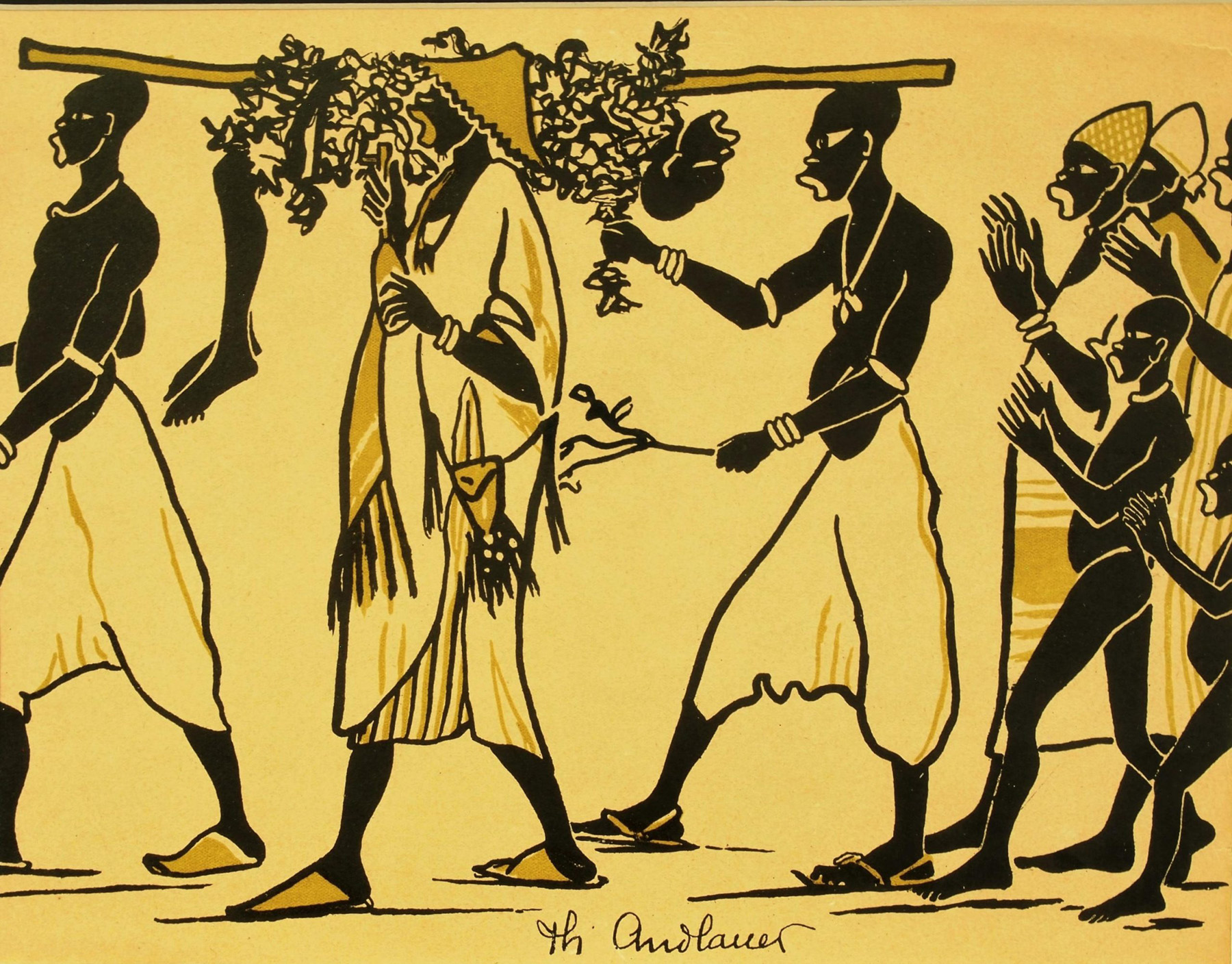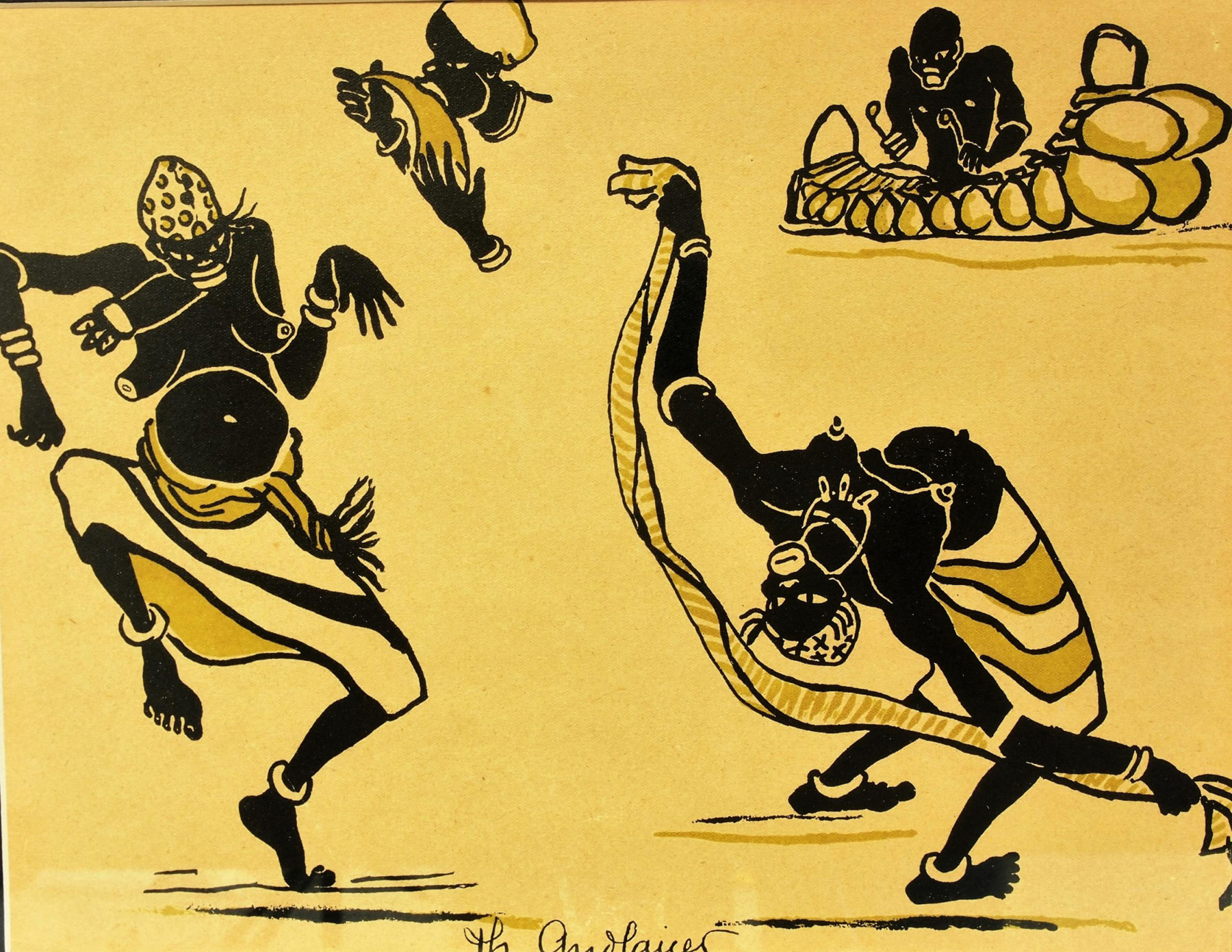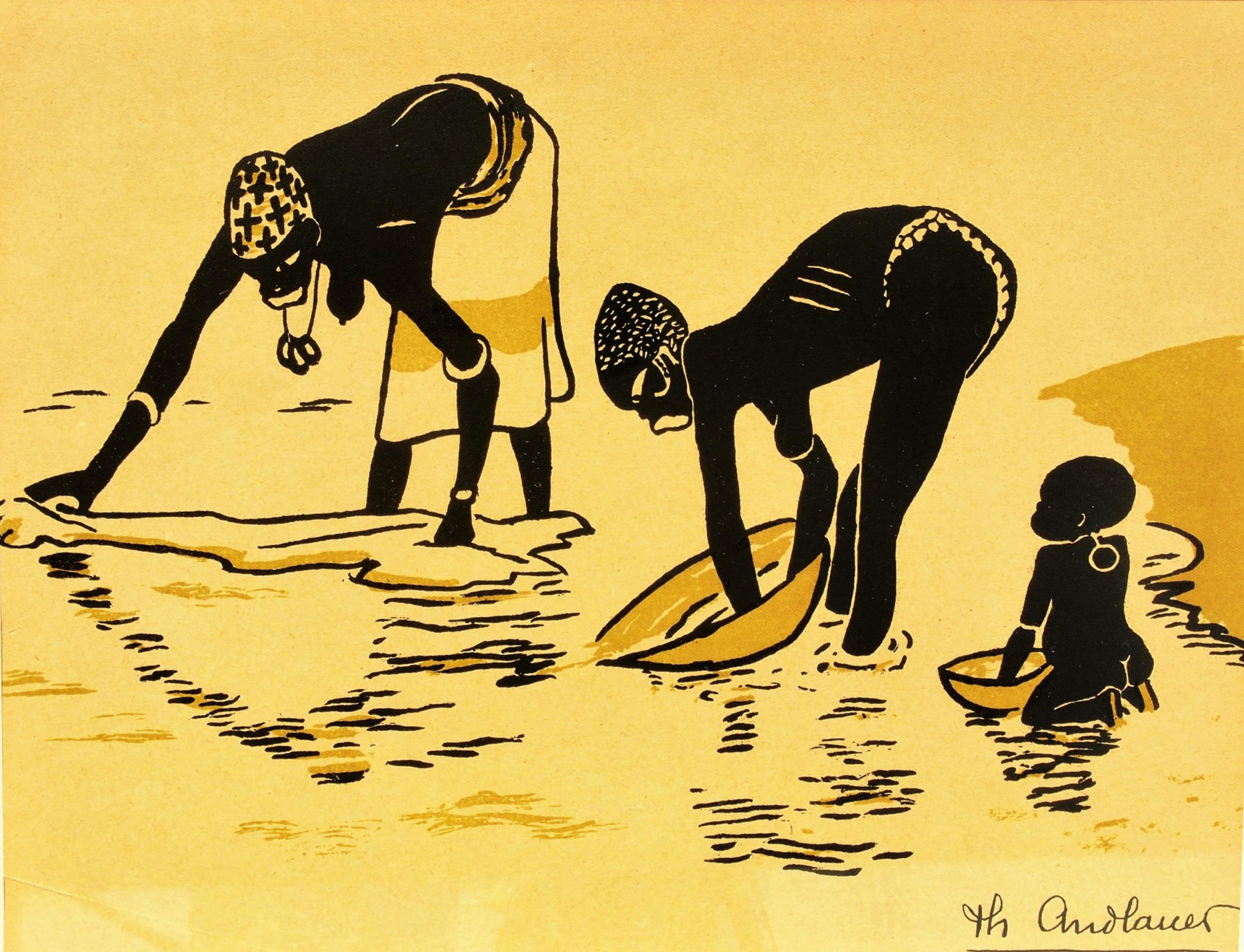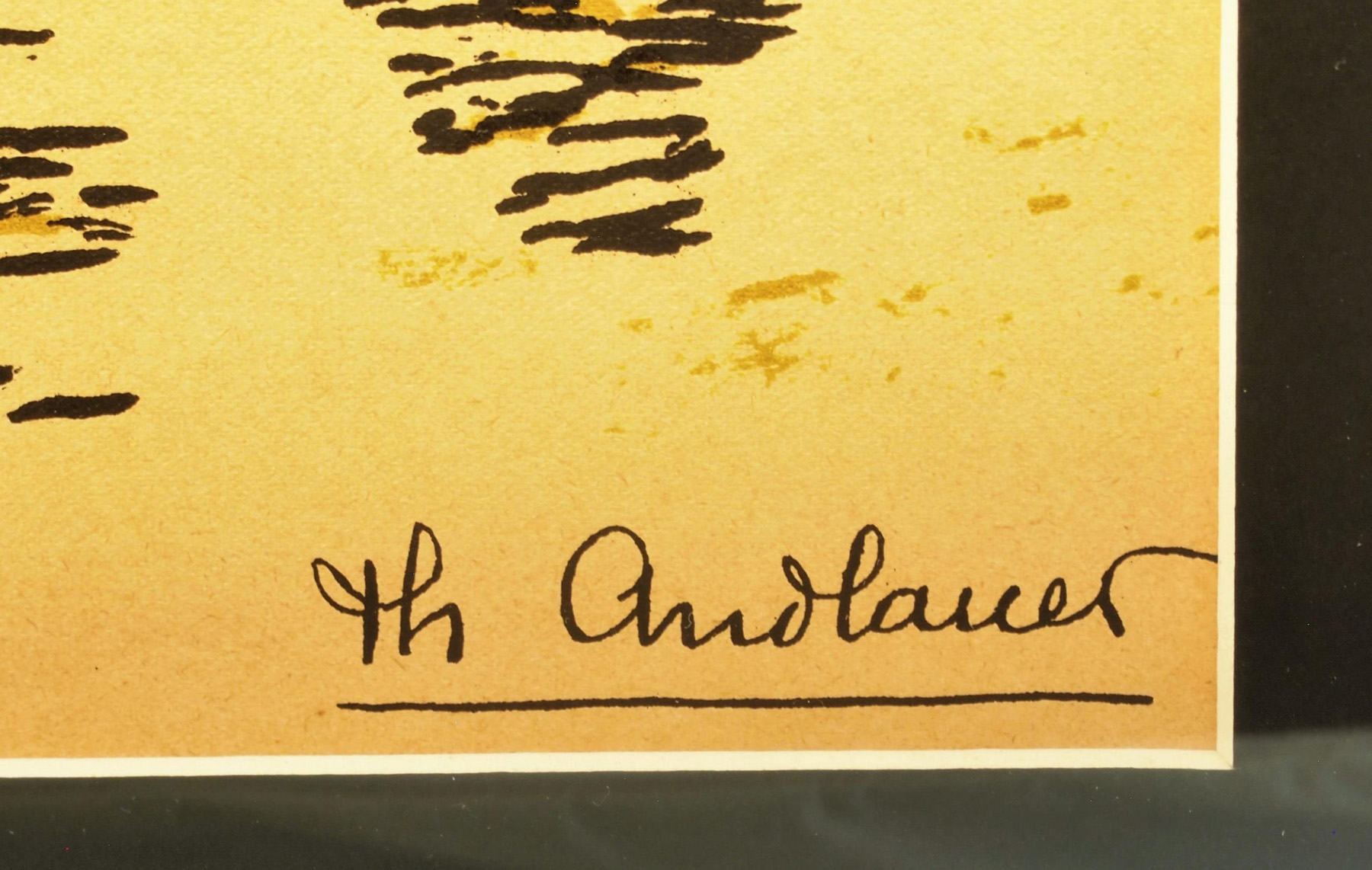Murrle Bennett Gold, Peridot and Mother-of-Pearl Bracelet*
Bracelet from Murrle Bennett crafted in 9 ct. gold, so very typical of the style of jewellery supplied by them to Liberty’s during the early 1900’s. Openwork in design with alternate rectangular and square sections,…
Archibald Knox Gold Pendant for Liberty
Gold pendant with an openwork entrelac design from the drawing board of Archibald Knox and dating from circa 1905. Set with a central blister pearl drop and with a turquoise matrix lower drop, this pendant…
‘Lady on The Seine’ by Dietz Edzard*
Ornately framed oil on canvas by the German born artist Dietz Edzard (1893-1963). This is an atmospheric half length portrait of an elegantly dressed young woman taking refreshment whilst seated on a verandah raised above…
Loetz ‘Candia’ Vase with Silver Overlay
Little cabinet vase from Loetz in opaque ‘Candia’ glass with a trefoil rim, further decorated with an applied Art Nouveau ‘Silberiris’ design in pure silver. Loetz collaborated with a company in the US known as…
WMF Flower Dish
Pewter flower dish from WMF with the original green cut glass removable liner. So Art Nouveau, with its flowing outline, featuring an openwork whiplash design framing leaves and berries of ivy. Originally electro-plated but most…
Contact Details
Tel: +44 (0)7802 872363
0345 6071772
Email: info@nouveaudecoarts.com
A Cannibal’s Day
Item Description
A series of four amusing art Deco era original paintings by the French artist Th. Andlauer depicting a group of African cannibals progressing their way through a typical day.
The first picture shows them in a state of hunger, the second having successfully captured their meal, in the third they are celebrating the feast and the final image is of them washing the dishes.
Simple but clever drawing, with the subjects full of movement and certain to raise a smile when looked at.
We've had the four pictures mounted and framed together in a single frame measuring 55.5 cm high by 69 cm wide. Each image is approximately 22.5 by just over 29 cm wide.
The light area showing at top right in the first two photographs is simply reflection in the glass.
